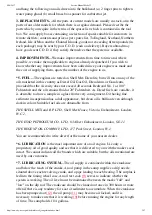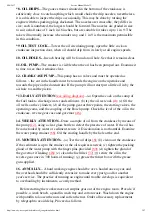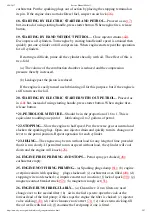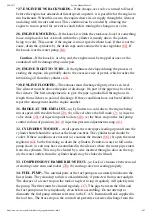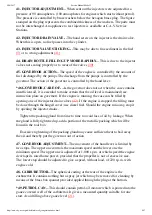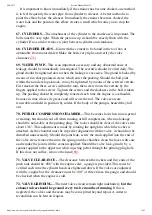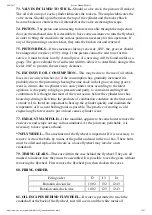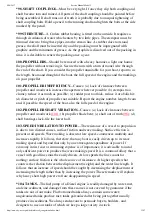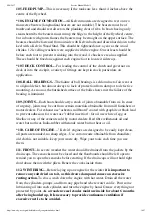
9/26/2017
Service Manual Model J
http://www.sky-net.org.uk/kelvin/diesel/j_range/man/index.html
16/17
105. FEED PUMP.--This is necessary if the tanks are less than 14 inches above the
centre of the flywheel.
*106. ENGINE FOUNDATION.--All Kelvin models are designed to rest on two
transverse bearers (longitudinal bearers are not suitable). The bearers must be of
hardwood and should rest direct on the planking clear of ribs. In boats having only
steam-bent ribs the bearers must run up the bilge to the height of the flywheel centre,
but in boats with grown frames the bearers may be straight on the upper surface. The
bearers should be fastened from outside with Kelvin bolts and drawn hard down to the
keel with a Kelvin Wood Stud. This should be tightened once a year as the wood
shrinks. 12 levelling washers were supplied with the engine. One at least should be
below each foot to prevent it sinking into the wood. 4 chocks were also supplied.
These should be fixed one against each engine foot to locate it sideways.
*107. DECK CONTROL.--For leading the control of the clutch and governor on
deck or into the cockpit, a variety of fittings are kept in stock; particulars on
application.
108. BALL BEARINGS.--The failure of ball bearings is seldom due to fair wear or
to original defect, but almost always to lack of protection from damp or to defective
mounting. As soon as the burnished surface of the balls shows rust the failure of the
bearing is imminent.
109. JOINTS.--Each boat should carry a stock of joints obtainable from us. In cases
of urgency, joints may be cut from certain materials obtainable from mill furnishers or
motor dealers. For exhaust use "asbestos millboard" coated with graphite or black lead
to prevent adhesion; for water use "rubber insertion"; for oil use white of egg or
Shellac or any of the cements sold by motor dealers. Red fibre withstands oil and
water but not heat. India-rubber withstands water but not heat or oil.
*110. CARE OF ENGINE.--" Kelvin" engines are designed to be easily kept clean,
all parts are rounded, no sharp edges., Use cotton waste obtainable from chandlers;
old cloth is not suitable, keep your waste dry. Wipe your tools each time you use
them.
111. FROST.--In severe weather the water should be drained from the jackets by the
drain caps. The seacocks must be closed and the floorboards should be left open to
remind you to open the seacocks before starting. If the drain caps will not hold tight
don't abuse them with the pliers. Renew the corks inside them.
112. WINTERING.--Before laying up an engine for the winter it is important to
remove any salt dried on to it, as this draws damp and causes an excessive
rusting action. To do so, wash down the engine with hot water. Drain all the water
from the cylinders, pumps, and from any pipe bend where water can lie. Pour some
lubricating oil into each cylinder, and turn the engine by hand. Grease everything not
protected by paint. As a wooden vessel exudes moisture inside for about 6 months
after being hauled up, It Is necessary to provide continuous ventilation if
excessive rust Is to be avoided.

